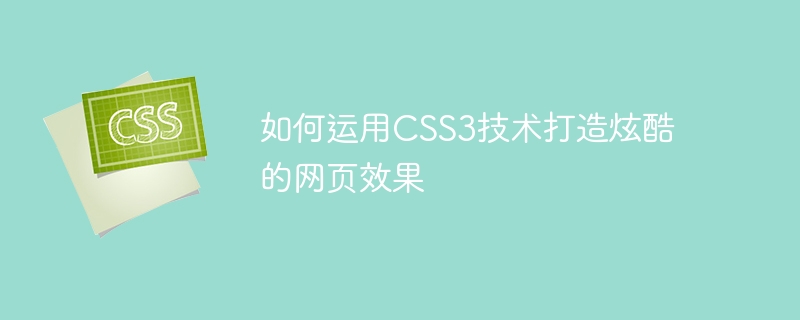

How to use CSS3 technology to create cool web page effects
With the development of the Internet, web design is becoming more and more important. The emergence of CSS3 technology has brought more inspiration and creative space to web designers. CSS3 has rich features and effects, which can easily achieve cool web page effects. This article will introduce some commonly used CSS3 features, and use examples to show how to use these features to create cool web page effects.
The border is a common element in web design. Through the border characteristics of CSS3, you can add more effects to the border. For example, you can use the border-radius attribute to add a rounded corner effect to the border; use the border-image attribute to add a picture to the border; use the box-shadow attribute to add a shadow effect to the border, etc. These border effects can make web pages look more three-dimensional and vivid.
The transition effect can make the web page elements show a smooth transition effect when the state changes. Through the transition attribute of CSS3, you can define the transition effect of the element, including the attributes, duration and delay of the transition. For example, you can set a background color transition effect for a button when the mouse is hovering, making the button's status change more natural and smooth.
Animation effect is one of the commonly used elements in web design. Through the animation attribute of CSS3, you can add animation effects to elements. The animation property can define the name, duration, number of repetitions, delay, etc. of the animation. For example, you can set a rotation animation for a picture, a flash animation for a button, etc. These animation effects can attract users' attention and make web pages more lively.
The gradient effect of CSS3 can achieve a smooth transition of color effects. Through the background attribute and linear-gradient function, you can define the gradient color effect of the element. For example, you can set a gradient effect for the background color from one color to another, or set a radial gradient, etc. These gradient effects can add layering and three-dimensionality to web pages.
The filter effect of CSS3 can change the appearance and presentation of elements. Through the filter attribute, you can apply various filter effects to elements, such as blur, color saturation, brightness adjustment, etc. These filter effects can add a unique visual effect to a web page, making elements more prominent and eye-catching.
To sum up, CSS3 technology provides a wealth of features and effects, which can help web designers create cool web page effects. By using CSS3 border effects, transition effects, animation effects, gradient effects and filter effects, you can make web pages more creative and attractive. Of course, for web designers, they not only need to be proficient in these features and effects, but also need to use them flexibly and combine them with specific design needs to create unique web page effects.
The above is the detailed content of How to use CSS3 technology to create cool web page effects. For more information, please follow other related articles on the PHP Chinese website!